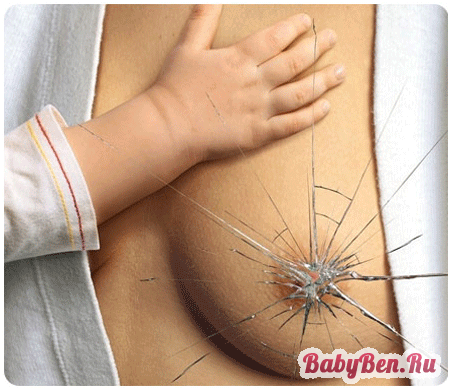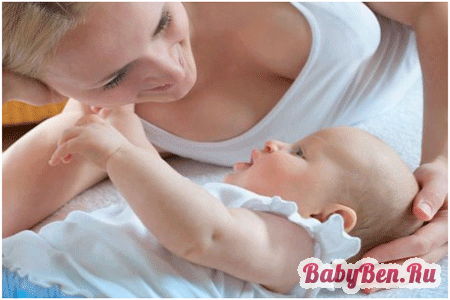
On the third day after the birth of the baby, the chest swells, and if you do not comply with the elementary rules of hygiene for breastfeeding care, cracks can appear on the nipples. If damage is formed, do not stop lactation, but you need to purchase lining for the skin around the damaged zone. Skin damage is easily treated, and after a few days, painful sensations will completely disappear.

The content of the article
Causes of the appearance of cracks on nipples
Frequent cause of damage to the skin around the nipple is incorrect feeding and incorrect attachment of a baby. Baby feed at an angle of 30 degrees so that the nipples and haloe are fully placed in the baby's mouth.
Also the cause of cracks on the nipples can be the incorrect completion of the lactation period. When feeding it is important to wait until the child himself will release the chest from the mouth. If the completion of feeding happened forcibly, the woman needs to smooth the jaw of the baby with a finger, so that, without leaving, remove the nipple. If you feed the child, whose teeth have cut, then cracks are not avoided due to the inadvertent bite of the baby's chest.
With the cracks of the nipples around the halo, damage to different depths appear. They can be both on the same chest and on both. If damage to a deep nature, blood can be distinguished from the wound. These wounds are usually hurt during the GW.
Treatment of cracks of Nipples
Cracks on nipples during feeding need specialized treatment. Processing damage is necessary several times a day. One of the funds:
- alcohol tincture of diamond green;
- synthetsin gel ointment;
- furatcino solution;
- juice leaf juice;
- tincture chamomile and calendula;
- chlorophyllipte solution;
- tincture cleanliness and sofa.
After the child is fed, the affected area needs to be sufficient to water, dry the breasts with light movements and apply a medicine on a gauze tampon on the nipple.
Also, a good healing agent will be treating the skin around the nipple of quartz. For faster healing, it is recommended for cracking with a lap for a lap, after which you can not feed the child for 10-12 hours.
Shallow abrasions can be lubricated with alcohol solution, after which the chest rinses, and the lactation does not stop. If you do not use drugs in the presence of cracks on the nipples, the woman runs the risk of getting an inflammatory process in the mammary gland, mastitis or baby.

Preventive measures
In order for the period of breastfeeding to be successful, you should take note of how to avoid and how to treat cracks on nipples. Preventive measures are the correctness of applying the baby to the chest throughout the entire period of the guards. When the lactation period will approach the end, you need to do air drying of the nipples.
In case of pain at the time of feeding, the child is shifted to the other side. The milk remaining on the chest is washed off with water and the chlorophylliptic solution is applied to the affected areas. Having a little withstood the product on the chest, the remains are blocked with a napkin and treated the wound with vitamin A.
Between feeding, the chest must be left open. During feeding, you should not often wet the chest. If necessary, the skin around the nipples is lubricated with drinking soda with the calculation of a teaspoon per glass of boiling water.
To soften the skin around the nipple, you can use Lanolin -based ointments. It is necessary to use the attending ointments after feeding with prolonged exposure for complete absorption of the product.

For the prevention of the cracks of the nipples during the period of bearing after they visited the shower, the chest is wiped with a hard towel so that the skin becomes denser. Also, a good means for preventive purposes is considered contrasting dousing. In order to avoid inflammation and abrasion of the skin of the chest, disposable liners can be used. Timely prevention of nipples cracks will help to avoid problem situations during lactation and will contribute to the healthy feeding of the baby.
